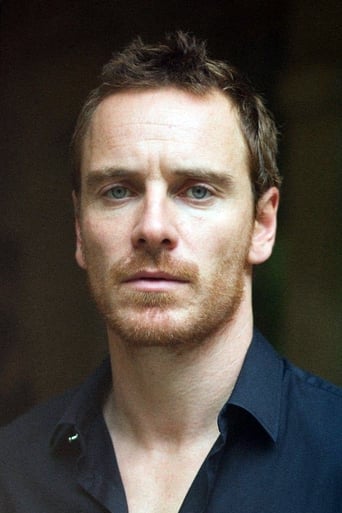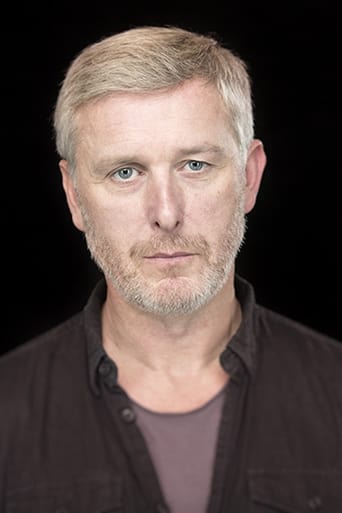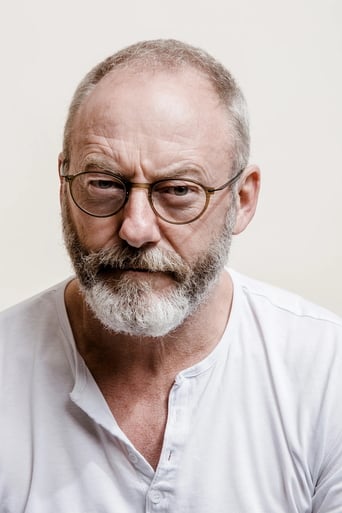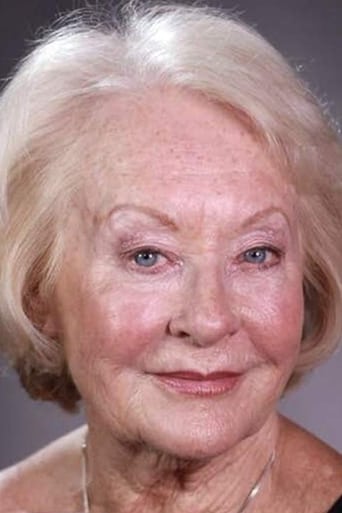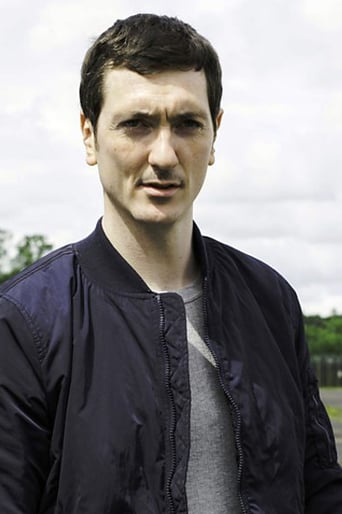Pluskylang
Great Film overall
Allison Davies
The film never slows down or bores, plunging from one harrowing sequence to the next.
Janis
One of the most extraordinary films you will see this year. Take that as you want.
Debb Curry-Millard
I was 11 when this film was based. I used to watch the news and hear about the conditions within the prison and when the prisoners went in hunger strike. Didn't know about the "blanket" and "no bath" policy. So I watched this film with a very small understanding. There is very little dialogue in the film. The pictures tell the story. A prison officer going to work. A new prisoner saying he wanted to wear his own clothes. Being made to strip in front of a group of prison officers. The first sight of the cell which was so visceral I actually thought I could smell how bad it must have been. We are introduced to Sands (played brilliantly by Michael Fassbender) when he is taken to be washed and have his hair cut. I knew there was violence on both sides, however seeing that scene shocked me. Badly. I didn't know if I could watch the rest of the film. However, I'm glad I did. When the prisoners are given gaudy clothes and are in normal cells, they decide to make a point and start wrecking their cells. What follows had me in tears. In the Roman times, the army used to used decimation as a way of punishment. The punishment was death by clubbing or stoning. The scene with the prisoners having to make their way down a corridor with riot guards on both sides, hitting their shields to scare and using their batons to hurt, was reminiscent of this. Sands and his priest Dom meet and Dom tries to talk him out of the hunger strike accusing Sands of wanting to commit suicide and become a martyr. I've read that the two actors stayed with each other and practiced that scene over 10 times a day. There is no camera movement until near the end. It is one seamless shot. And it was done in 4 takes. There was also a scene where an officer was cleaning up the nightly urine which the prisoners emptied under their doors onto the corridor. Again, one camera until towards the end and it was beautiful. Never thought I'd call watching someone clean up urine beautiful.The last part of the film shows Sands at the end of his hunger strike. Again, not much dialogue; we just watched Sands get more ill and thinner to the point where he cannot stand the weight of clothes on his skin.It's diffic to say I enjoyed it as it's not a fluffy, feel good movie however it was a powerful film and I'm glad I did watch it.
kiosilveira
Hunger shows us Irish Republican Army (IRA) activists, whom prisoners demand to be treated as political prisoners (their goal was to separate Northern Ireland from the UK and re-emigrate to Ireland), receiving inhuman treatment, being humiliated and having to cope with daily violence, led by Bobby Sands (Fassbender), decide to go on a hunger strike to have their orders met. Not deepening in the political aspect of the story, Steve does show the dehumanization suffered by both prisoners and prison guards, beautifully done, with incredible takes, marvelous dialogues, it's a heavy film that is not easy to digest, but it's worth it to be seen. Besides, Fassbender still delivers a performance like Christian Bale in The Machinist (2004), leaving you totally paralyzed.
Dr Jacques COULARDEAU
The Film is like an oratorio fort he death of Bobby Sands in a British prison in Northern Ireland in 1981 after a sixty-six day hunger strike. He was only the first one to die in a series of nine and it took nine lives to be wasted for the British government and Margaret Thatcher to yield on all the demands of the prisoners except the status of political prisoners.The film does not rewrite history and we are supposed to know this most abominable episode of the inglorious war in Northern Ireland. The British had no future there but after this dramatic event the British had lost any moral or political claim in Northern Ireland which was both part of Ireland and not British at all, except as a brutal colony.The film just gives us a believable vision of this horror: the refusal to wear prison uniforms, hence the locking up of the prisoners in absolutely unbearable semi-isolation with nothing to wear but a blanket, thence the refusal to wash and the frightening painting of the cells by the prisoners with their own excrement. Then they had to be taken one by one to be forcefully shaved and washed up in a bathtub with a lot of violence and beating up. The only right they had was that of common criminals: a visit by relatives every so often, or rather every so rarely. Then they accepted to put on a pair of black trousers: the only moment when they were dressed. The hunger strike on March 1, 1981 was the most drastic decision and the film tries to listen to Bobby Sands' arguments when he discusses them with his priest. We have to listen to those of the priest too, essentially that it was vanity that moved them because they were looking for martyrdom and if they died, the priest said, it would only be suicide. And we know what that means in the Catholic Church.Then the visual depiction of Bobby Sands' death is very graphic. The hatred of some of the nurses and auxiliaries was obvious, including their having UDA tattooed on their fingers so that the prisoners could know where they stood and this UDA capital letters were tattooed on the hitting phalanxes of the fist. The violence was not only real but also symbolical. In fact the film contains little dialogue because the objective is to show the humiliation and the violence and nothing else on one hand and the resistance on the other hand. On one hand you had animals of prey torturing their prisoners. On the other hand you had prisoners reduced to be animals and building their dignity in pushing it to the end of the line, to death if necessary and it was necessary for nine of them.An extremely disturbing film showing how low the British fell in this war and they even stooped too low to be able to conquer anything. They just failed and were defeated.Dr Jacques COULARDEAU
estebangonzalez10
"I have my belief, and in all its simplicity that is the most powerful thing."Steve McQueen's feature debut, Hunger, is a realistic and brutal portrayal of the Irish Republican Army (IRA) activists who are protesting their miserable treatment at the Belfast prison known as The Maze. Hunger is a challenging film to watch due to the brutal and unflinching portrayal of such a dark period in our recent history. If you have a weak stomach then you might want to stay away from this film because it is really gruesome. The way McQueen's camera captures the events and allows the images to tell the story is truly remarkable. We get extreme close ups of characters faces and hands that tell us a lot more than words possibly could. The film doesn't actually center on one character as it begins by following one of the prison guards as he goes off to work, then we are introduced to one of the prisoners who has just arrived at the Maze and is refusing to wear a prison uniform, and finally the film focuses on Bobby Sands a prisoner who is protesting their treatment with a hunger strike. What he is looking for is political prisoner status and despite their efforts they have been refused. The images in Hunger are disturbing but powerful. Of his three films, Hunger is possibly his weakest one, but it is still an extraordinary movie. He has perfected his craft with each upcoming film and is slowly inserting himself among my favorite directors. Steve McQueen and Enda Walsh's brutal screenplay centers on the battle between the IRA imprisoned activists and the British guards that took place in 1981 in the Maze prison of Northern Ireland. It opens with a scene of a prison guard (Stuart Graham) heading for work. His knuckles are full of blisters and before he gets in his car he checks that there are no bombs hidden under it. It's an interesting way in which McQueen portrayed the constant threats and fear of retaliation the guards were under. Once he arrives at the prison we are introduced to Davey (Brian Milligan), a new IRA prisoner who is refusing to wear his uniform and claiming for political status. The guards refuse to listen to him and lock him up with another prisoner named Gerry (Liam McMahon). Their cell is smeared with excrement all over the walls and the conditions are pitiful. It's their way of expressing their resistance towards the brutal treatment they receive from the guards. Their efforts are useless. Halfway through the film we are introduced to another IRA prisoner, Bobby Sands (Michael Fassbender), who has decided that the best way they can protest is by beginning a hunger strike. In a memorable scene between Sands and a visiting priest (Liam Cunningham) we hear his reasoning for behaving this way.The performances in this film are really amazing, Michael Fassbender especially as he undergoes an incredible physical transformation. I think his work in all 3 films with McQueen are absolutely breathtaking. He is perhaps one of the best actors working today. The scene between him and the priest which is about 17 minutes long is shot entirely on a single take and it really stands out in the movie. In a film that has very little dialogue that long scene worked extremely well and the dialogue was extremely well written. The rest of the cast also deliver a strong performance, but it isn't until Fassbender shows up on screen that the film truly picks up and engages us. Hunger is carefully crafted and McQueen uses every single shot to such an incredible effect that those images speak more than words. Hunger may be disturbing for most audiences, but it is extremely well made and hugely effective.



